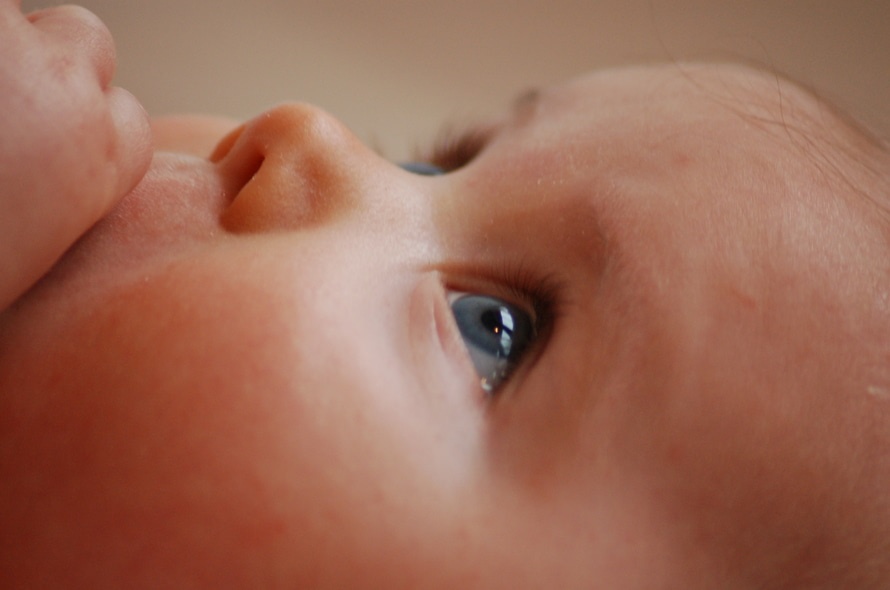Look, I admit that sometimes I accidentally brush my teeth with hand soap. At least once a week. With that being said, I still want my little one to develop healthy dental habits. They may be “just baby teeth,” but it is important for kids to get started early on a daily dental routine that will carry them into adulthood. So I sat down with a close friend of mine, who just happens to be a dentist, and asked him a bunch of questions. I wanted to know why children’s dental care is so important, and what I can do to keep my 2-year-old healthy and excited about brushing those pearly whites…
From a dentist’s perspective, why is proper dental hygiene so important for children?
Proper dental hygiene teaches children {and parents} how important baby teeth {also called primary teeth} are. Healthy baby teeth help children chew and speak, as well as hold space in the jaws for the incoming permanent teeth. Losing a baby tooth too soon can cause malalignment of the surrounding teeth which leads to crowding and less space available for permanent teeth. Long term, this may even necessitate the need for orthodontics {braces} at a young age.
At what age should children have their first visit to the dentist and why?
Just as a baby will visit the physician for a well-baby check, children should also visit the dentist for an examination. It is recommended by the American Dental Association that children have their first dental visit no later than the first birthday. The purpose of this visit is to help establish a “dental home” for dental care, a place where the child can establish a relationship with a dentist and become comfortable with the environment of a dental office. The visit also allows parents to receive instruction from the dentist on how to properly clean their child’s teeth and discuss any diet and fluoride needs.
How often should children visit the dentist?
Children’s dental visits can range from once every 3 months to once a year depending on the child’s oral hygiene, age, and oral health. Children who are at high risk for cavities may need to be seen more regularly to ensure that oral hygiene is being improved or maintained, while children who are low risk may be able to come fewer times a year.
What about toothbrushes and toothpaste?
Once the first tooth comes through {approximately 6 months}, parents can begin wiping the mouth with a soft cloth or brushing with a soft toothbrush. {Soft! Not medium or hard!} As far as size, a kid-size toothbrush will work a lot better. For children younger than 3 years, it’s a good idea to brush using fluoridated toothpaste no larger than a smear the size of a grain of rice. Children 3-6 may use a pea-sized amount of fluoridated toothpaste. Both types help with plaque removal on the teeth, but fluoride provides the additional benefit of preventing tooth decay {cavities}.
How often should you switch out their toothbrush?
Like adults, toothbrushes should be changed every 3-4 months. Also, if a child has recently been sick, it may be a good idea to throw out the old toothbrush as bacteria may be building on the brush surfaces.
At what age do they need to start flossing?
There is no best age for children to start flossing. Instead, the best time to begin flossing is when the teeth have “contact” with each other … in other words, when the teeth are touching each other and there are no spaces between teeth. Typically, most children won’t have contact until all primary teeth have fully erupted {approximately age 2 or later}. Many children won’t allow for flossing at age 2, so work with your child until they are comfortable letting you floss their teeth. Another good option is to use floss sticks or flossers to get the job done quicker.
When should you start letting kids brush their own teeth?
Most children lack the dexterity to be able to adequately brush their teeth independently and will likely not do a good job of brushing each surface of each tooth. Also, you don’t want your child brushing and swallowing the toothpaste on a regular basis. It’s a good idea to assist your child in brushing and flossing until at least age 5. Be sure to set a good example by brushing with your child or making sure your child sees you brushing.
Are there any other dental hygiene concerns for little ones?
Too Many!
- One thing most parents aren’t aware of is that bacteria associated with tooth decay can easily spread from parents to their children {or between siblings} by sharing utensils and cups. To help prevent bacteria spreading, avoid sharing utensils with children and avoid the sharing of pacifiers and bottles with other children. Also, parents should be ensuring that they are maintaining their own oral health through regular dental visits and treatment to help reduce the spread of such bacteria.
- As far as cups/pacifiers, it is best to attempt to stop the use of pacifiers and bottles at 1 year of age. The further use of pacifiers can create problems with the shape of the child’s arch form over time and lead to a narrow arch that will cause crowding as teeth continue to erupt. In addition, never place a child to bed with a bottle containing anything other than water. A child sleeping with a bottle of milk will pool around the child’s teeth, and the sugars present will decay the front teeth causing large cavities. As far as brands/types of cups and pacifiers, there’s really not much difference.
- Real quick on sugars – it’s not about how much they eat or drink in a day, it’s about the frequency. Every time sugar is introduced into the oral cavity, the pH of the saliva is altered and takes approximately 15 minutes to return to normal. If you’re going to let your child have a juice box or candy bar, make sure to have your child eat or drink it all at one sitting or with a meal. In addition, it’s always a good idea to add water to any juice to attempt to reduce the sugar present.
- As children start to run more, they are more prone to injuries. It is very common for children to fall on their face and injure their lip and/or teeth. If a child chips a tooth, makes a tooth loose, or dislodges a tooth, it’s a good idea to call your dentist immediately. Children’s pain relievers can be beneficial for pain control, but it’s possible the child may have further damage not seen; therefore, it’s important to have a dentist take a look.
This just begins to scratch the surface on dental health for our little ones, so I’d love to hear from you too. What are your tricks for getting your child excited to brush their teeth? Any other tips for making dental health fun??













